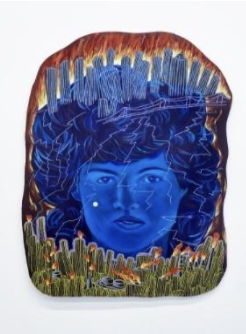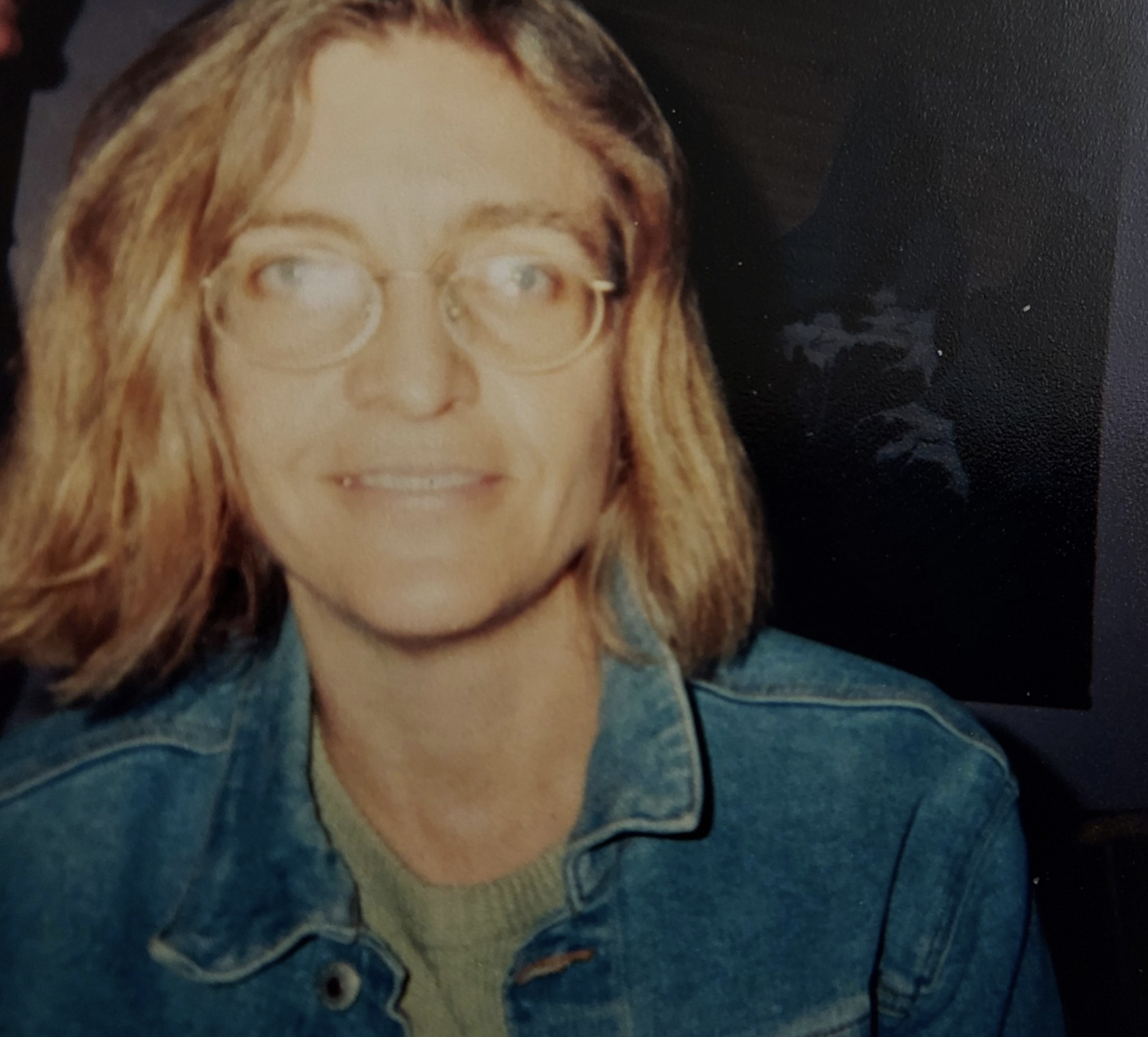On February 25, we lost an audacious, pioneering artist, Janet Cooling (1951-2022), recognized widely as a significant contemporary American painter who brought lesbian imagery into mainstream art. She was a Professor Emeritus of Art at San Diego State University, having taught there from 1985 to her retirement in 2009. Her partner and wife of 40 years was by her side when she died, after a long battle with breast cancer.
Born in Chester, PA, Cooling grew up in a New Jersey suburb. She received her BFA from Pratt Institute in 1973, followed by an MFA from the School of the Art Institute of Chicago in 1975.
Cooling emerged as an artist in the late 1970s, a time of struggle and fundamental change for women, the LGBTQ+ community, and lesbians in particular. It’s crucial to understand this context in order to appreciate the content and bravery of Cooling’s art.
After the Stonewall uprising in New York, when police roused a gay bar in June, 1969, the queer community emerged out of the shadows of the anti-Vietnam war movement and the civil rights movement. In the 1970s, women and gays organized against humiliation, discrimination, and restrictive laws. For gays, the 1970s were years of protest marches — and finally change. In 1977, the first openly gay man, Harvey Milk, was elected to the city council of San Francisco. An anti-gay initiative in California was defeated in 1978. 1979 saw the first national march in Washington D.C. for gay rights.
In a deeply unequal society, women formed their own national organizations to struggle for economic and civil rights. The National Organization of Women was formed in 1966 and waged national campaigns starting in the 1970s against state and federal anti-abortion laws. In 1973, the Supreme Court ruled that a woman had a right to decide whether or not to have an abortion in the landmark case, Roe v. Wade.
Lesbians weren’t exactly welcome at first within the women’s movement. In the 1970s, lesbians found a new vision for themselves. Many believed that a separate community of strictly gay women was the way to go. Lesbians expressed themselves in an outburst of astonishing art, music, and literature. Cris Williamson, a ground-breaking collective in Washington D.C. called “The Furies,” Judy Chicago, Sweet Honey & The Rock, Rita Mae Brown, Audre Lorde, and Judy Grain, are among those lesbians who found their creative voices during this decade.
Add Janet Cooling to that list.
Up until then, art that made it into galleries and exhibitions was overwhelmingly created by men. Totally absent was figurative painting based on lesbian and feminist symbology. Cooling broke that taboo in the American art world by openly stating that content and declaring herself to be an out lesbian artist. Her work during the late 1970s and 80s featured lesbian erotic paintings: portraits of lovers alone or with her, which were lyrical, evocative, and intimate.
Cooling associated with a group of artists in Chicago who were called “The Post-Imagists” by the art critic, Joanna Frueh. In her October 1978 article in the New Art Examiner, Frueh explained: “If Imagism flashes and blares like television or rock music, then [Post-Imagism] induces like poetry, a slower communicator that compels us inward.” These artists found it difficult to get shows or buyers, and almost impossible if you add Cooling’s explicit, lesbian-centered content.
Cooling was given her first solo show at the Los Angeles Woman’s Building in 1976. Established in 1973, The Woman’s Building exemplified the impulse in the 70s among feminists, including lesbians and bisexual women, to establish autonomous spaces outside of traditional, patriarchal institutions. An important milestone for Cooling was her inclusion in an exhibition in 1982 at the New Museum in New York City, the first museum show in the U.S. to address gay and lesbian themes in contemporary art.
The 1980s was marked by the tragedy of the AIDS epidemic. Because the victims were largely gay men, the Reagan administration’s response was totally inadequate. This tragedy deeply affected Cooling, who had moved back to New York in 1981. In the mid-to-late 1980s, the images in her paintings were apocalyptic scenes, floating figures, empty dress forms in shop windows, androgyne-suited figures, drag queens, jazz musicians and shoes in surreal juxtapositions as if on stage, framed by curtains.
Cooling’s large-scale paintings in this period eschewed canvas in favor of shaped gator board, a rigid poly board used in model-making that gives the works a chunky dimensionality. Her color became vibrant and visceral against a black background, a palate of colors bordering deliberately on edgy. There was a distinctive, in-your-face energy to her work that combined realism, surrealism, and abstraction. In this painting entitled Apocalypse, a woman’s face is framed by a city on fire. I find it to be a merger of personal memories and desires amplified to cosmological scale.

Apocalypse, 1982
In this phase of her work, suburban tract houses and nuclear plants, remembered from Cooling’s childhood, intermingle with big-haired fashion models, drag queens, and roaming wildlife. Elsewhere, women couple erotically in sublime landscapes while other figures are engulfed by burning skyscrapers, fields of lightning, hovering planets, and writhing snakes.

Drag, 1980s
In the mid-1990’s, while teaching at San Diego State, she returned to lesbian erotic content. She won a coveted prize for her series entitled “Paintings from Hell’s Kitchen” in 1998. Sometimes, she used female bodybuilders as models, always with a sensual interplay of styles. She expanded into collages and landscapes during this period. She and her partner formed a foundation to collect paintings by underrepresented women artists, particularly lesbians and women of color.

Venus Aphrodite, 1995
Her work has been exhibited in group and solo exhibitions both in the United States and abroad. It’s been included in the U.S. Pavilion at the Venice Biennale, curated by Marcia Tucker. Throughout the 1970s and 80s, Cooling had three solo shows at Nancy Lurie Gallery in Chicago and a solo show at Feature Inc., among others. Cooling’s work resides in the collections of the Los Angeles County Museum of Art; the New Museum, New York; the Museum of Contemporary Art, San Diego; the Allan Memorial Art Museum, Oberlin; the Laguna Art Museum, Laguna Beach; and the Leslie-Lohman Museum of Gay and Lesbian Art, New York, among others.
Cooling employed a bold palette with a lesbian-feminist agenda and made highly expressionistic paintings with a conceptual and political edge. At first glance, paintings by Cooling seem to be happy-go-lucky, when in reality they represent disturbing surreal expressions of personal memories and desires – truly a unique, fearless, and important artist and lesbian icon. May she rest in power.


What Do You Think?